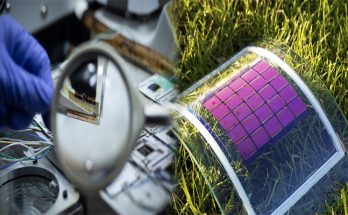Solar energy is a renewable energy source that holds immense potential in addressing the world’s energy needs. Over the years, researchers and scientists have been working on improving solar cell technology to make it more efficient and cost-effective. One area of focus has been the development of third-generation solar cell materials, which offer new and exciting possibilities for harnessing solar energy. In this article, we will delve into the latest innovations in third-generation solar cell materials and explore their potential impact on the renewable energy landscape.
Third-generation Solar Cell Materials
Third-generation solar cell materials refer to a new class of materials that aim to overcome the limitations of traditional silicon-based solar cells. These materials utilize advanced technologies and alternative materials to improve efficiency, flexibility, and manufacturing processes. Some of the key third-generation solar cell materials include:
- Perovskite Solar Cells: Perovskite solar cells have emerged as a promising alternative to conventional silicon-based solar cells. They are made of a hybrid organic-inorganic material with a unique crystal structure that allows for high light absorption and efficient charge transport. Perovskite solar cells demonstrate high power conversion efficiencies and can be manufactured using low-cost, solution-based processes.
- Dye-Sensitized Solar Cells: Dye-sensitized solar cells (DSSCs) utilize a layer of light-absorbing dye to convert sunlight into electricity. These cells offer advantages such as flexibility, transparency, and the ability to generate electricity under low-light or diffuse light conditions. DSSCs also have the potential for low-cost production and can be integrated into various applications and surfaces.
- Quantum Dot Solar Cells: Quantum dot solar cells use nanocrystals made of semiconductor materials to absorb and convert sunlight into electricity. These materials have unique electronic properties that allow for tunability of their bandgaps, enabling absorption of a broader range of light wavelengths. Quantum dot solar cells have the potential to be highly efficient and can be manufactured using solution-based processes, making them economically viable.
- Thin-Film Solar Cells: Thin-film solar cells involve the use of thin semiconductor layers, such as amorphous silicon, cadmium telluride, or copper indium gallium selenide, to convert sunlight into electricity. These cells are lightweight, flexible, and can be produced using low-cost manufacturing techniques like roll-to-roll processes. Thin-film solar cells have the advantage of being adaptable to various surfaces and applications, including building-integrated photovoltaics.
Recent Innovations
- High Efficiency Perovskite Solar Cells: Researchers have made significant progress in increasing the efficiency of perovskite solar cells. Efficiencies have surpassed 25% and are closing in on the commercial viability range. Innovations in the formulation and manufacturing processes, as well as improvements in layer stacking and charge transport, have contributed to these advancements.
- Tandem Solar Cells: Tandem solar cells combine two or more distinct solar cell materials with complementary absorption spectra to maximize light conversion. Advances in perovskite solar cells and their integration with other materials, such as silicon or tandem organic solar cells, have achieved record-breaking power conversion efficiencies. Tandem solar cells have the potential to exceed the efficiency limits of single-junction cells and could revolutionize the solar industry.
- Stability and Longevity: Enhancing the stability and longevity of third-generation solar cell materials has been a major focus of research. Scientists are exploring strategies to improve the materials’ resistance to moisture, temperature variations, and ultraviolet degradation. Encapsulation techniques, interfacial engineering, and improved device architectures are some of the avenues being pursued to ensure long-term durability.
- Scalable Manufacturing: Another area of innovation is scalable manufacturing processes for third-generation solar cell materials. Researchers are working on developing roll-to-roll printing techniques and solution-based processes that can reduce production costs and enable large-scale manufacturing. These advancements could accelerate the adoption of third-generation solar cells in mainstream solar energy applications.
The field of third-generation solar cell materials is witnessing rapid advancements and innovations. Materials like perovskite, quantum dots, dye-sensitized solar cells, and thin-film solar cells offer exciting opportunities for increased efficiency, flexibility, and cost-effectiveness in solar energy conversion. With further developments in stability, manufacturing processes, and efficiency, these materials have the potential to revolutionize the renewable energy landscape and contribute to a more sustainable future.





